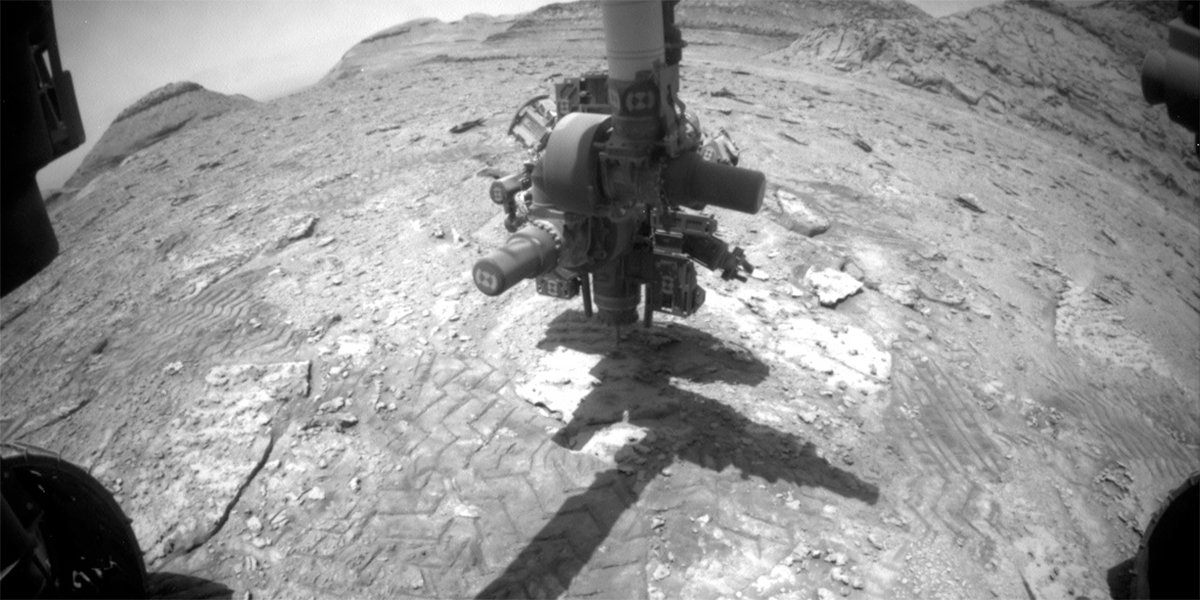2 min read

The team was eagerly awaiting our downlink this morning to hear how the drill attempt from Sol 3742 went. The images came down and indeed there was a drill hole… a mini drill hole… and sadly not deep enough to get to a sufficient depth for the drill assembly to start collecting sample. This was our fourth attempt to drill this marker band, and we gave it our best shot from both a geology and engineering perspective. Unfortunately these rocks do not want to cooperate – they’re hard and they weather into resistant and recessive beds which make them very challenging to drill. So the team made the difficult decision to get back on the road, without a drill sample from this location. I can imagine future rover scientists telling tall tales of these marker band rocks and the one that got away: “that was the hardest rock I’ve ever seen! It looked me right in the eye and then jumped out of the net (drill bit assembly)…” All kidding aside, we’ve learned a lot about these rocks from remote sensing, contact science, and drill attempts, and the team is excited to analyze the data and think about what else lies ahead.
Today’s two-sol plan is focused on wrapping up science at the “Dinira” drill site. MAHLI and APXS will analyze the mini drill hole and drill tailings, and ChemCam and Mastcam will also investigate the chemistry and texture at the attempted “Dinira” drill hole. The team also planned a long distance ChemCam RMI mosaic to study some distant stratigraphy – which is a good reminder that there’s still a lot to explore ahead! Then Curiosity will drive ~97 m to the south, to get us back on track to traverse across the marker band. The second sol includes some untargeted observations, including an autonomously selected ChemCam AEGIS target. Curiosity will also acquire a number of environmental observations to monitor dust in the atmosphere and search for noctilucent clouds at twilight.
So we’ll say goodbye to the “Encanto” and “Dinira” drill target vicinity… these targets were not charming and did not deliver wealth as their names may have suggested, but we’ll always remember their elusive and intriguing qualities!
Written by Lauren Edgar, Planetary Geologist at USGS Astrogeology Science Center







